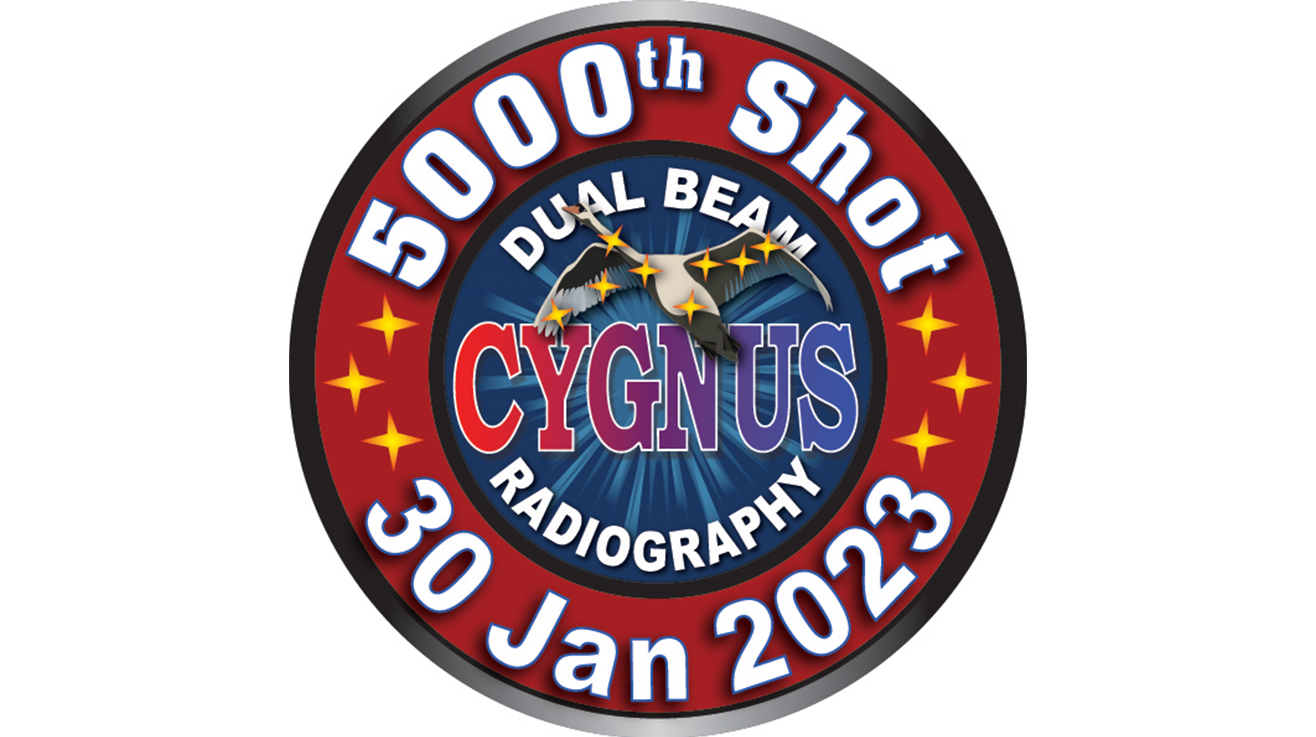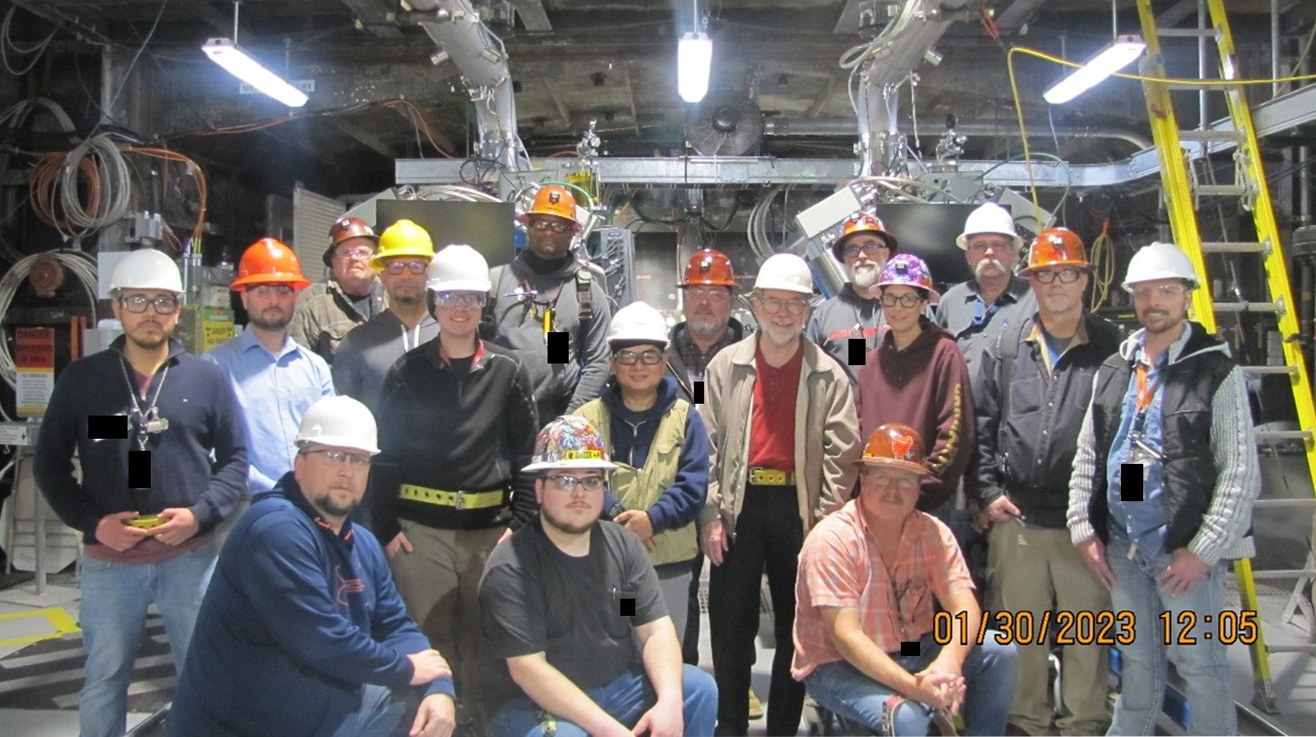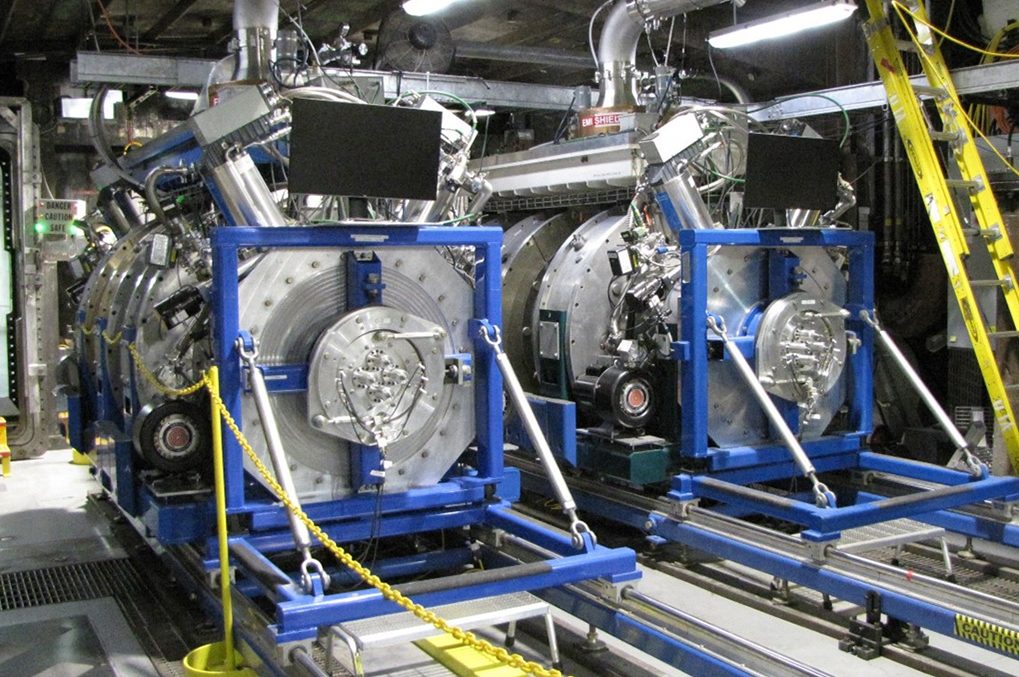
On January 30, 2023, the Nevada National Security Site’s (NNSS’) Cygnus fired its historic 5000th shot. An x-ray source used for radiographic diagnosis on Subcritical Experiments (SCEs), Cygnus is a primary SCE diagnostic and has been in service at the NNSS for over two decades.
Cygnus was installed at U1a in 2003, and its original purpose was to facilitate radiography on the Armando SCE, performed in 2004 when the NNSS was still known as the Nevada Test Site. It performed its first shot in January 2004, followed by its first SCE in May of the same year. It has since provided radiography on a total of 10 SCEs, developing a reputation as a true NNSS workhorse.
SCEs obtain technical information about the U.S. nuclear weapons stockpile in the absence of underground explosive nuclear testing. They are designed in such a way that no nuclear explosion is required to test the nuclear device, keeping the U.S. in compliance with its 1992 testing moratorium. These experiments are called “subcritical” because there will be no critical mass formed, i.e., no self-sustaining nuclear fission chain reaction will occur.
Today, Cygnus’ team remains dedicated to keeping the diagnostic in top condition. The two identical Cygnus machines located in the U1a Complex’s Dual Beam Radiographic Facility define the operational baseline for a large x-ray platform in terms of process, safety, and performance. Cygnus has undergone three major refurbishments since its inception, in 2012, 2016, and 2022. To keep the Cygnus capability in a state of readiness, the team has executed shots daily since the 2022 refurbishment. Designed as a single-shot machine, Cygnus’ complex diode electrodes are expended with each shot. The procedure to rebuild those diodes limits Cygnus to, at most, two shots a day.
The team has also recently installed a new acoustic diagnostic on the Cygnus Marx tanks, which record sounds made throughout the process of charging and releasing capacitor bank energy. The data recorded allows for the rapid identification of a component breakdown or failure by generating a 3D map of the location of the anomaly to aide troubleshooting and component replacement efforts.
The experiences and insights gained from Cygnus have been key in the development of a much larger x-ray platform, Scorpius, which recently received its first parts shipment. With its higher x-ray energy, and multiple pulse capability, Scorpius will support SCE testing at the next level of SCE fidelity. It is planned that Cygnus and Scorpius will operate concurrently according to specific
Stockpile Stewardship needs.

So what’s next for Cygnus? Can we expect to see shot 6000? Cygnus project manager Mark Fiscus thinks so. “Bet on it,” he says. “Cygnus is recently refurbished and ready for 5000 more.”

